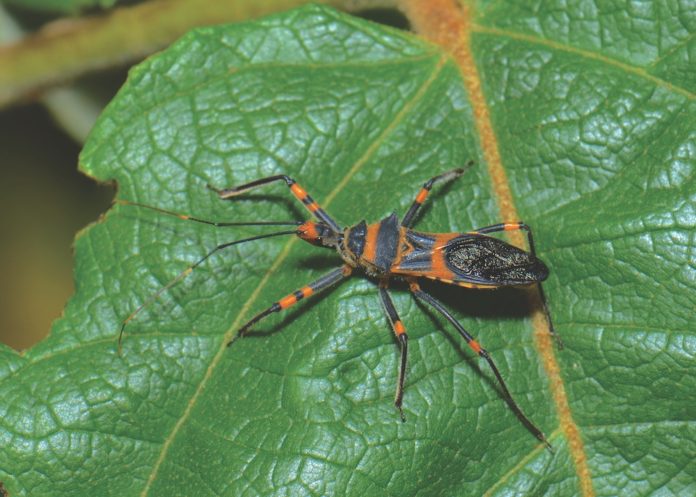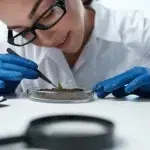Pesticides are a problem. As testing becomes more prevalent (but not yet industrially regulated or standardized), media reports abound about cannabis samples testing positive for pesticides. Late last year, Berkeley’s Steep Hill Labs reported an astounding 84 percent of samples submitted to the lab within a thirty-day period tested positive for chemical bug killers.
That’s no good for patients who need to avoid toxic substances. And, really, who wants to ingest even trace amounts of insecticides? As we should have learned in lessons from Dr. Seuss’s cautionary children’s tale The Lorax, all sorts of chemicals used in industrial farming (and other industries) end up in the water table, soil, and atmosphere, where all living organisms are affected by short-sighted human actions.
Cannabis culture is deeply rooted in health and wellness, and harmful chemicals don’t square with pro-environmental, health, or ethical standards. Fortunately, insects are here, to the rescue—badass bugs that ingest other bugs, behaving weirder than anything Dr. Seuss ever rhymed.
Controlling pests in your garden or grow with predator bugs takes extra commitment and controls, but the rewards could increase your peace of mind. It’s all about prevention before infestation and creating a hostile environment for pests.
“It cannot be understated that an ounce of prevention is worth a pound of cure,” an expert at ARBICO Organics said. “Healthy soil and healthy plants give any crop the best opportunity for vitality, yield, and pest resistance. Clean growing environments, monitoring, and trapping are your best first-line offenses against plant pests.”
Some additional info from the bug whisperers:
- Cannabis suffers from many common garden pests including aphids, whiteflies, and thrips. Indoor grows create a favorable environment for mites, fungus gnats, and root aphids.
- “Recommended solutions are based on each grower’s specific conditions. Continuity is key! One release of beneficial or predatory insects is not enough for ongoing control,” according to ARBICO.
- Popular “generalist” beneficial insects include ladybugs, green lacewings, and the aptly named assassin bug; they’re often used for “low infestation, soft-bodied insect control.”
- For high and/or specific infestations, experts will recommend specific predator bug species and a regimen to treat the problem.
- “In certain situations, we also make recommendations for a pest knockdown using a bio-rational organic insecticide such as neem oil, pyrethrin, or azadirachtin-based products,” an ARBICO statement noted.
As in any war, strategy is key. Organic pest control providers must periodically analyze conditions specific to your grow, along with other factors, to formulate the best campaign for your bug issues. Long-term pest control usually consists of a combination of predator insects, beneficial organisms (like nematodes), and pesticides approved for organic use.
“Growing location is one of several criteria used for selecting the best control solution,” noted a spokesperson for ARBICO, which is located in Arizona. The company considers a variety of factors when determining the best solution for an operation:
- Targeted pest (aphids, two-spotted spider mites, etc.).
- Environmental conditions such as temperature, humidity, & light hours.
- Square footage.
- Level of infestation.










